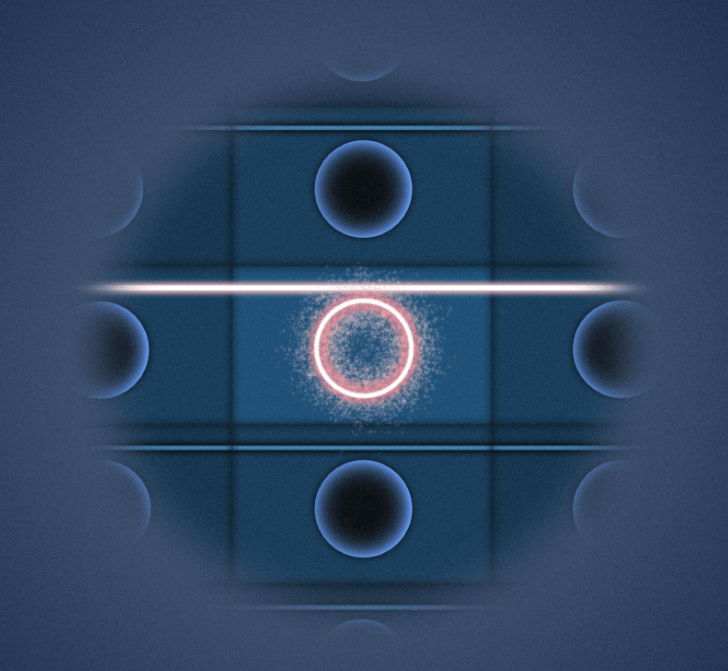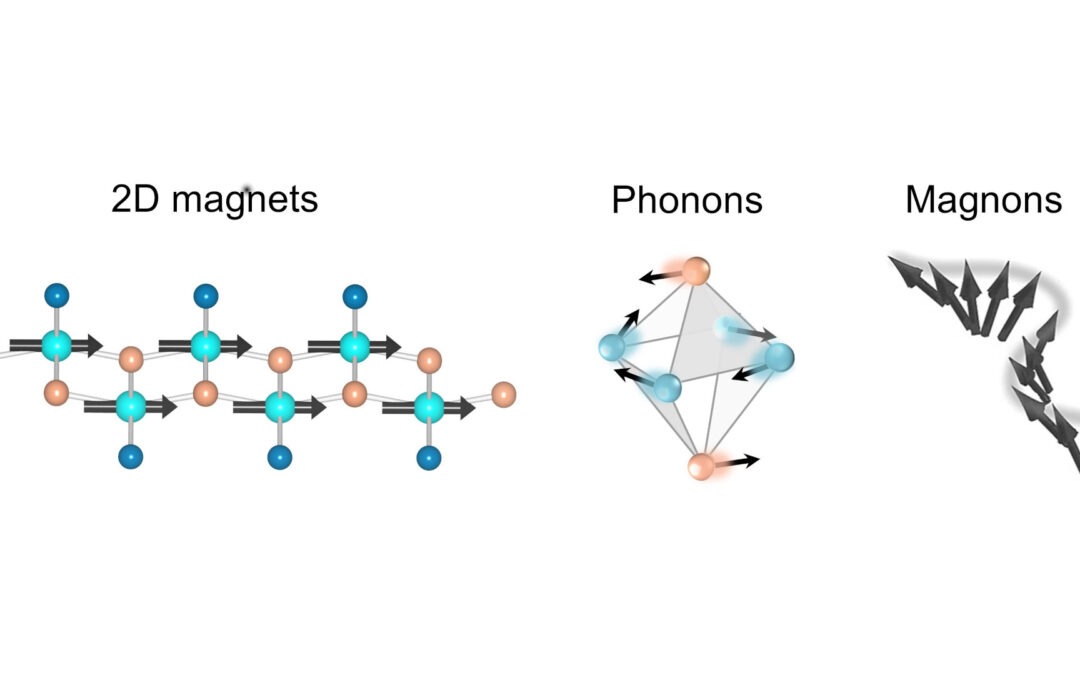High-dimensional entangled states of light provide novel possibilities for quantum information, from fundamental tests of quantum mechanics to enhanced computation and communication protocols. In this context, the frequency degree of freedom combines the assets of robustness to propagation and easy handling with standard telecommunication components. Parallelly, the implementation of these concepts on functional and scalable devices is another major challenge of quantum technologies.

Wigner function (artistic view) of entangled photons exhibiting either a fermionic (red) or bosonic (blue) behavior, generated by a semiconductor chip.
The QITe team of Laboratory MPQ, in collaboration with the Centre for Nanoscience and Nanotechnologies, has addressed this double challenge by demonstrating two novel techniques for generating and manipulating frequency-entangled photon pairs using miniaturized semiconductor chips (AlGaAs).
The first method, published in npj Quantum Information, uses a nonlinear waveguide to generate two-photon frequency combs over a wide spectral range, and to control their symmetry by simply adjusting the frequency of the pump beam and introducing a time delay between the photons of each pair.
The second method, published in Optica, is based on a semiconductor microcavity illuminated by a transverse laser beam. By controlling the spatial profile of this pump beam, the correlations and the symmetry of the quantum state can be engineered, so that the produced photons behave either as bosons or fermions.
These results pave the way for the realization of complex protocols in an integrated manner and for the out-of-the-lab deployment of quantum technologies based on high-dimensional quantum states, which could be used in future quantum networks.
Link to the coverage article on the INP website
Contact:
M. Amanti, F. Baboux, S. Ducci
References:
Generation and symmetry control of quantum frequency combs, G. Maltese, M. Amanti, F. Appas, G. Sinnl, A. Lemaître, P. Milman, F. Baboux, S. Ducci, npj Quantum Information 6, 13 (2020)
Engineering two-photon wavefunction and exchange statistics in a semiconductor chip, S. Francesconi, F. Baboux, A. Raymond, N. Fabre, G. Boucher, A. Lemaître, P. Milman, M. Amanti, S. Ducci, Optica 7, 316 (2020)
À lire aussi

TUPHO, for large-scale production of integrated photonic circuits
The TUPHO project is an initiative that aims to bridge the gap between upstream innovation and large-scale production in the integrated photonic circuits (PICs) industry. It is led by Hamidreza Neshasteh and Ivan Favero, members of the Light and Mechanics team at MPQ...

Towards light control of van der Waals magnets
Laboratoire: MPQ (Matériaux et Phénomènes Quantiques), Université Paris Cité & CNRS Adress: Bâtiment Condorcet – 10 Rue A. Domon et L. Duquet – 75013 Paris Internship/PhD supervisor: Niloufar Nilforoushan and Yann Gallais Tel: 0157276223 e-mail:...

Seminars
Prof. Sebastian Loth — University of Stuttgart, Institute for Functional Matter and Quantum TechnologiesTitle: Coming soon16 Janvier 2026 à 11h00 — Salle Luc Valentin (454A) Dr. Florian Dirnberger — Department of Physics, TUM School of Natural Sciences, Technical...

On-Chip Ferromagnetic Resonance for van der Waals Heterostructures: Anisotropy and Damping of Cobalt Interfaced with Exfoliated 2D Materials
A collaboration between the technical hub, the clean room platform and the TELEM group at MPQ laboratory has developped a new experiment demonstrating that standard broadband ferromagnetic resonance can still be effective to probe the magnetization dynamics of “thin...
